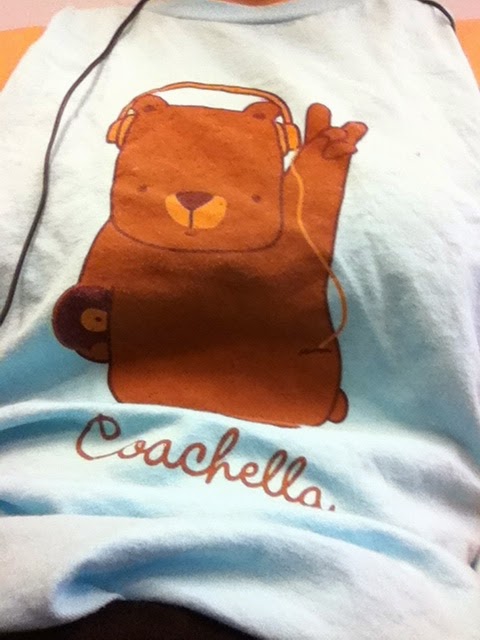My family is from Sinaloa, MX, but I was raised in Palm
Springs, CA, and both of my parents are now remarried. I have one sister, three
brothers, three step-brothers, and a half-brother & half-sister in Mexico.
Needless to say, commotion and chaos can be somewhat calming for me. (I’m all
about studying with music blasting through my speakers).
In “Out of the House, the Halo, and
the Whore’s Mask…” Gaspar de Alba explores the presence of gender politics in
Chicano/a art and the perpetuation of the “madre/virgen/puta” stereotypes. By
advocating heterosexuality, thus, denouncing homosexuality, patriarchal
interests are safeguarded through social oppression. Feminists and lesbians are
labeled ‘agringadas’ and further ostracized from a primarily-machista
community. The phrase “if you can’t beat them, join them” comes to mind: most
turned the cheek to social oppression, pressured, instead, to focus on the
fight against racial oppression. In turn, the female body was restricted for
the male body and reserved for reproduction: objectification, by definition.
The female body is often subjected to a rigid dichotomy between good and bad –
whereas, la madre and la virgin evoke positive connotations, for example, la
puta does not. Chicana artists aim to redefine female sexuality and recreate
the female body. Gaspar de Alba shows that Chicana female artists were
outnumbered by Chicano male artists; curiously enough, even in the arts—not
just in math, science, technology, finance, and so on—males are dominant. In a
study (can’t recall which one), men and women were asked to imagine a truck
filled, half-way to the top, with water. Then, they were asked to draw a line –
showing how the water would sit/look – as the truck was driving uphill. The men
had no problem, whereas it was difficult for the women to grasp the idea. The
study explains why men are more likely to succeed in physics, but less likely
to excel in the arts – biologically, the sexes are wired to operate on opposite
sides of the brain. It makes me wonder
if some men dominated in the arts, naturally, or if it was just a head start.
 |
| Best example I could find |
“There’s No Place Like Aztlan:
Embodied Aesthetics in Chicana Art” begins with an allusion to Dorothy in Oz,
in order to relate gender and identity to Aztlan. Gender and social oppression
is ranked lower than racial oppression, in importance and need for focus, and
often disregarded completely by some Chicanos. By taking pride in Aztlan, the
utopian motherland, and remaining loyal to the cause, some Chicanas embrace
machismo, defend chingon politics, and perpetuate internal racism. Manifested
by the male ego, although symbolic in nature, at the root of Aztlan is
machismo. Chicana artists, then, must go beyond the physical and reclaim the
female identity through a different medium, that is, art. Considering how
restricted and limited women are, everything about Chicana artists is
liberating.
I think that I was desensitized to
the image of La Virgen de Guadalupe; growing up, it was like the easiest game
of ‘Where’s Waldo’ at my tia’s house. If you looked really hard, you could find
her on every single wall. Of course, I understand the religious significance. My
favorite cousin was named after Guadalupe and I even wore her on a necklace, but
I never became attached to La Virgen – at least, not in a religious sense. We
were raised Catholic, at first, but my dad was absurdly jealous; once he made
up a reason to believe that my mom had a Sancho at our church, she wasn’t
allowed to go there anymore. My mom probably looked to the church for strength
and hope, which I think she found in the community. Our neighbors were
Jehovah’s Witnesses and it wasn’t long before they welcomed our family into their
church. I was a kid with no choice, so I attended service with my mom—though,
only for a few months, before my dad became jealous again. Once my mom
remarried, four years later, we attended a Christian church. Throughout my
childhood, religion seemed to be much more philosophical and subjective, rather
than absolute. (To be fair, I’ve always been fascinated by science --- if you
have three minutes: http://www.youtube.com/watch?v=ytaf30wuLbQ ). I was surprised
to learn that Lopez’s work was considered disrespectful, as an objectification
of la Virgen; in the same respect, I thought, shouldn’t all those candles be
more controversial? Again: objectification, by definition. That’s why I really
admired Lopez’s work – she was thinking ahead of her generation and those that
came before.
For the stencil, I was inspired by
these two images. I learned at a young age that education is a form of power
and it works in favor of an oppressed youth: por eso, me dueles Mexico. No hay
justicia en mi patria, there is no justice in my country for students. I was
also inspired by the thought of Michael Brown; this photo, in particular, is
one of my favorites. Racism is alive and well, but so are our communities – I
think, for the better.
Again, if you have time, here’s a
short poem: http://allpoetry.com/First-They-Came-For-The-Communists
I considered sketching a figure,
with earphones on and making the peace sign – peace through music. I am a music junky; lately, I’ve
been in my rock and roll phase. I went with “cuernos” or “horns," instead of the peace sign. Some things happen and they are out of our control; but, we can control how we perceive
the world around us, how we act and react, and, more importantly, how we treat
those around us. People find reasons to hate, but it is what it is; at least,
for me, music helps me tune the bad vibes out.



No comments:
Post a Comment